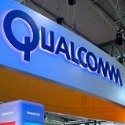Qualcomm blames its legal battles with Apple and another licensee for a fall in profits but managed to grow sales thanks to its chips business.

Qualcomm yesterday blamed disputes with Apple and another licensee widely assumed to be China's Huawei for a collapse in profits during the first three months of the year (its second quarter), although its results were not as bad as analysts had feared.
Net income tumbled 52%, to about $400 million, compared with the year-earlier quarter, despite a 5% increase in sales, to $5.3 billion. Shares in the Californian chipmaker rose 3% in after-hours trading following the publication of the earnings report.
"Our fiscal second-quarter results reflect better than expected performance in our semiconductor business and lower operating expenses," said Steve Mollenkopf, Qualcomm's CEO, in a company statement. "We are making good progress on executing our $1 billion cost plan, are focused on closing our pending acquisition of NXP and are well positioned to drive the global commercialization of 5G."
Qualcomm Inc. (Nasdaq: QCOM) has been embroiled in a legal dispute with Apple Inc. (Nasdaq: AAPL) and its contract manufacturers over the intellectual property used in iPhones. It has had a similar falling out with another company that analysts believe to be Huawei Technologies Co. Ltd. Those disagreements wiped about $1 billion in licensing revenues off results, compared with the year-earlier quarter. (See Qualcomm Blasts Apple for Disrupting Deals in Legal Dispute and Patents Prizefight Pending: Clash of the Tech Titans.)
As a result, sales at the company's licensing business fell 44% in the second quarter, to about $1.26 billion. At the chips division, they were up 6%, to around $3.9 billion, as unit shipments rose 4.5%, to 187 million.
Qualcomm recently began cutting jobs in an effort to reduce annual operating costs by around $1 billion. According to The Wall Street Journal, the company plans to cut about 4.4% of its workforce starting in June, having employed a total of 33,800 workers (including part-time employees) at the end of September 2017. (See Qualcomm Cuts Jobs as It Seeks Chinese Approval for NXP M&A.)
For all the latest news from the wireless networking and services sector, check out our dedicated mobile content channel here on Light Reading.
As Mollenkopf points out, Qualcomm is eager to complete a $44 billion takeover of NXP Semiconductors N.V. (Nasdaq: NXPI), a semiconductor maker with headquarters in the Netherlands. The move would help Qualcomm expand into other markets outside the smartphones business, including the automotive sector.
However, it has been held up by Chinese authorities as trade tension between China and the US continues to grow. US President Donald Trump has already slapped tariffs on up to $60 billion of Chinese imports. And some analysts believe protectionism is to blame for recent US actions against Huawei and ZTE, China's two largest network equipment makers. (See Trade Warmonger Trump May Slap Tariffs on Chinese Tech – Reuters, US Investigating Huawei for Sanctions Violations – Report and ZTE in Existential Crisis as It Slams 'Unfair' US Ban, Considers 'Judicial Measures'.)
The worst-case scenario is that Chinese authorities try to block the NXP takeover in retaliation. US efforts to prevent ZTE from using US-made components for the next seven years could also hurt Qualcomm's business.
The midpoint of Qualcomm's guidance for the third quarter is for a sales decline of 3.5% and a 17% drop in diluted earnings per share. Last year, the company reported third-quarter revenues of $5.4 billion and diluted earnings per share of $0.58.
Midpoint guidance also indicates a 4.5% increase in chip unit shipments next quarter, from 187 million in the third quarter of 2017.
— Iain Morris, International Editor, Light Reading
About the Author(s)
You May Also Like











